Exploring the floral world in search of flowers that begin with a given letter can introduce us to beauty we might not have otherwise discovered.
Whether you’re looking for a clue for a crossword puzzle or a beautiful flower whose name starts with the letter C to honor a special someone, you’ve come to the correct place.
Keep reading if you want to find out more about the numerous C-flower species!
Table of Contents
1. Calendula

The calendula flower, often known as the pot marigold, has been an essential component of British cottage gardens for generations.
The calendula is a low-maintenance flower that produces beautiful yellow or orange blossoms and has been used for centuries in medicinal and culinary applications.
Although calendula can be grown as a perennial in warmer areas, it is typically treated as an annual in flower beds and pots.
2. Calla Lily
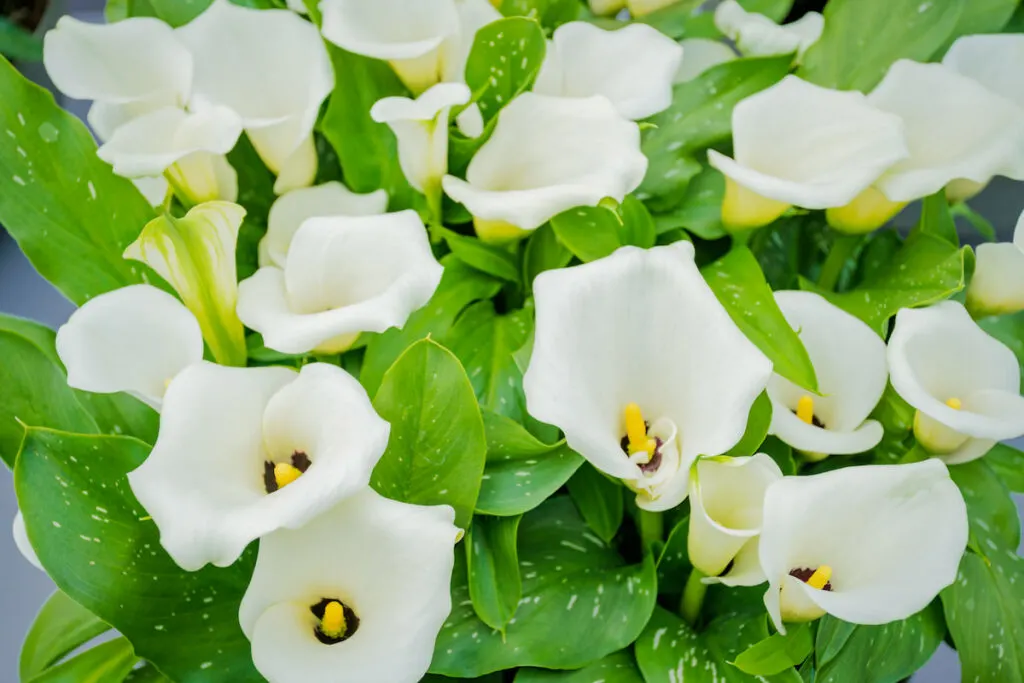
Calla lilies are beautiful in their subtle elegance.
Calla lilies are flowers with symbolic meanings of purity, rebirth, and innocence make them fitting additions to floral arrangements for weddings, Easter, and funerals.
Depending on the variety, these delicate flowers with chalice-shaped flowers can reach heights of 1 to 3 feet and are well-suited for growing in both beds and containers.
You can also care for them as houseplants to add sophistication to your interior decor.
3. Camellia

Camellias are evergreen shrubs that bloom from late fall to early spring in milder regions.
Camellia flowers have dark, glossy foliage and huge, luxuriant flowers.
The camellia is a widely grown plant in climate hardiness zones 7 through 9.
To thrive, camellias need to be planted in a partially shaded area with rich, moist soil. Although they mature slowly, these plants can live for decades.
4. Chrysanthemum

There’s a wide range in size and color when it comes to chrysanthemum flowers, which can range from just a few inches across to the size of a soccer ball.
Chrysanthemums bloom for a long time, from summer into fall.
The best conditions for growing chrysanthemums include full sun, protection from harsh winds, and soil rich in humus that drains well. They’re also excellent container plants.
5. Clematis
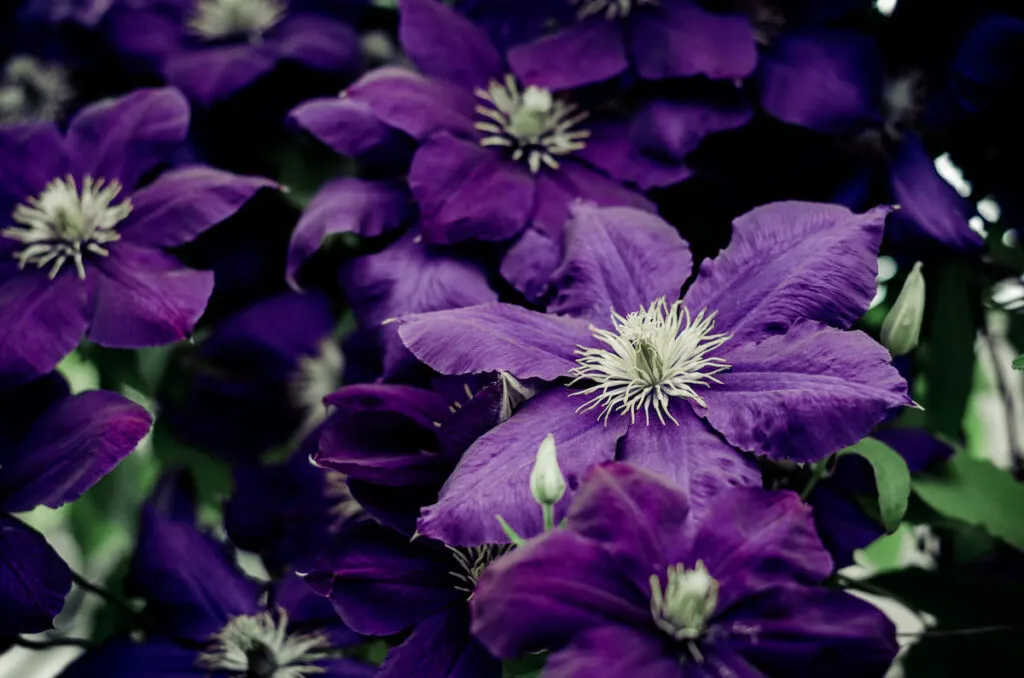
Clematis, often called the “queen of the vines,” is a climbing plant with showy flowers that come in a wide range of sizes and colors.
These vines are quite magnificent, whether you choose a summer-blooming variety with big, brilliant blossoms or a fall-blooming type of clematis with hundreds of smaller flowers.
Clematis thrives in USDA Plant Hardiness Zones 4 through 9. It does well, whether grown in flower beds or in pots.
Although most clematis varieties are vines, shrubby clematis plants are also available.
6. Cosmos
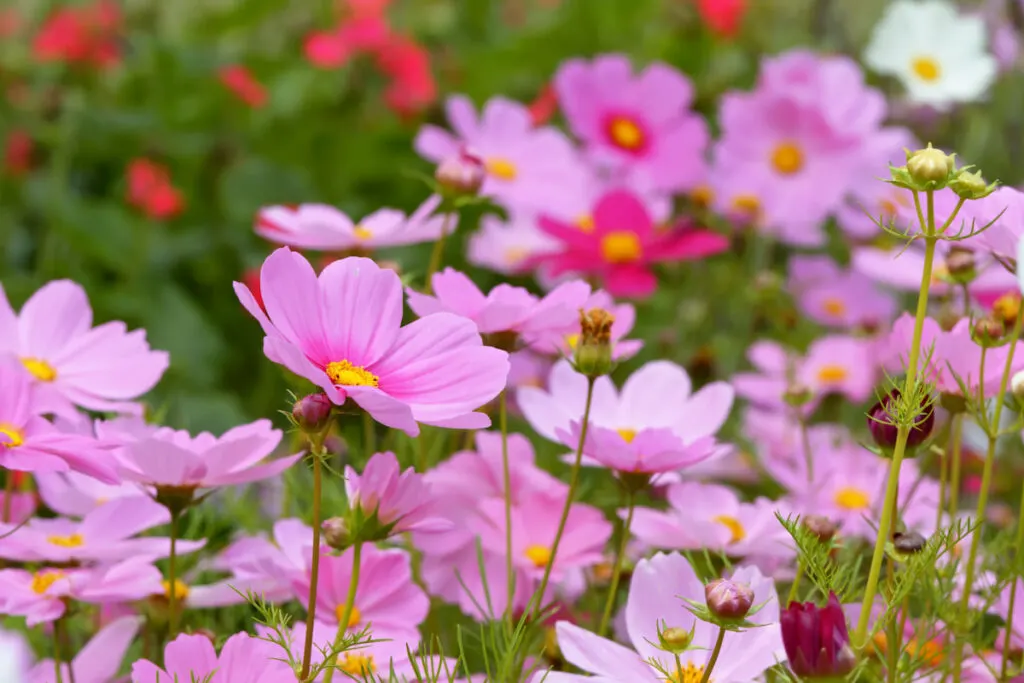
Cosmos are sun-loving plants with a long flowering season.
Cosmos flowers showcase rich, delicate leaves and a wide variety of vibrant flowers, from white and pink to crimson and orange, which can quickly take over the entire flower bed.
They bloom all summer and into the fall, drawing in various winged visitors.
You can easily cultivate them from seed, so preserve some from the flowering cosmos to use the following year. These plants require little care and can even thrive in poor, dry soil settings.
7. Celosia
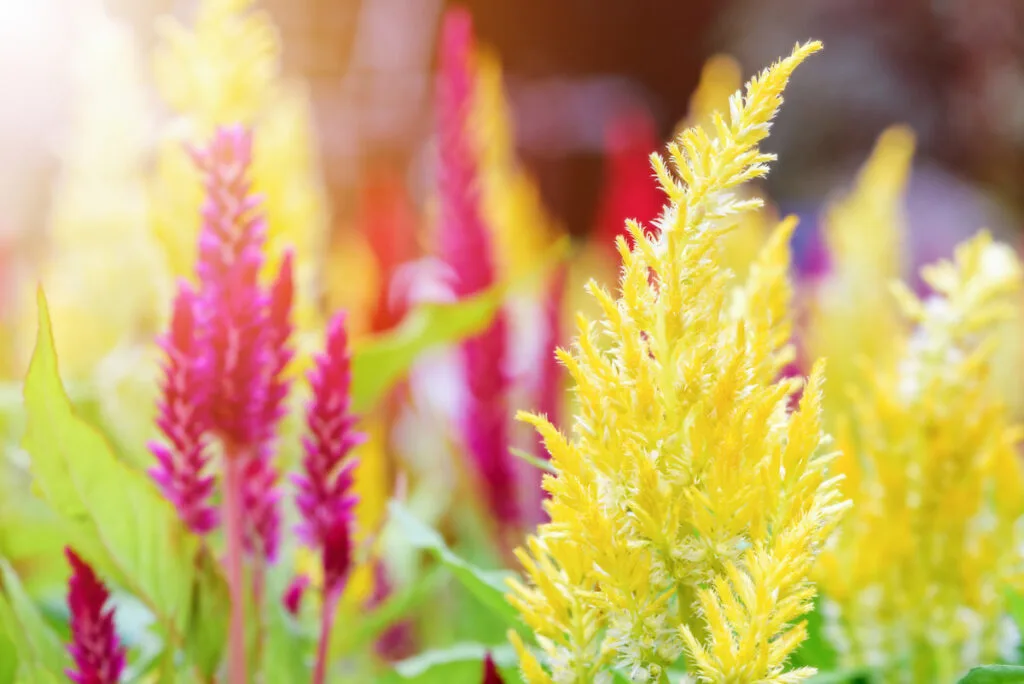
Celosia, most often known as “wool flowers,” belongs to the amaranth family. You can use them as garden decorations and eat them too. The flavor of this floral plant is similar to spinach.
Celosia has vibrantly colored flowers in red, orange, pink, and even green. Those eye-catching-looking blooms make for magnificent bouquets in any garden.
In addition, dried celosias can keep their vivid colors for a good while (months, even).
The stems of these flowers can be anywhere from 10 to 30 inches long, while the flower heads themselves can reach lengths of up to 1 foot.
8. Candytuft
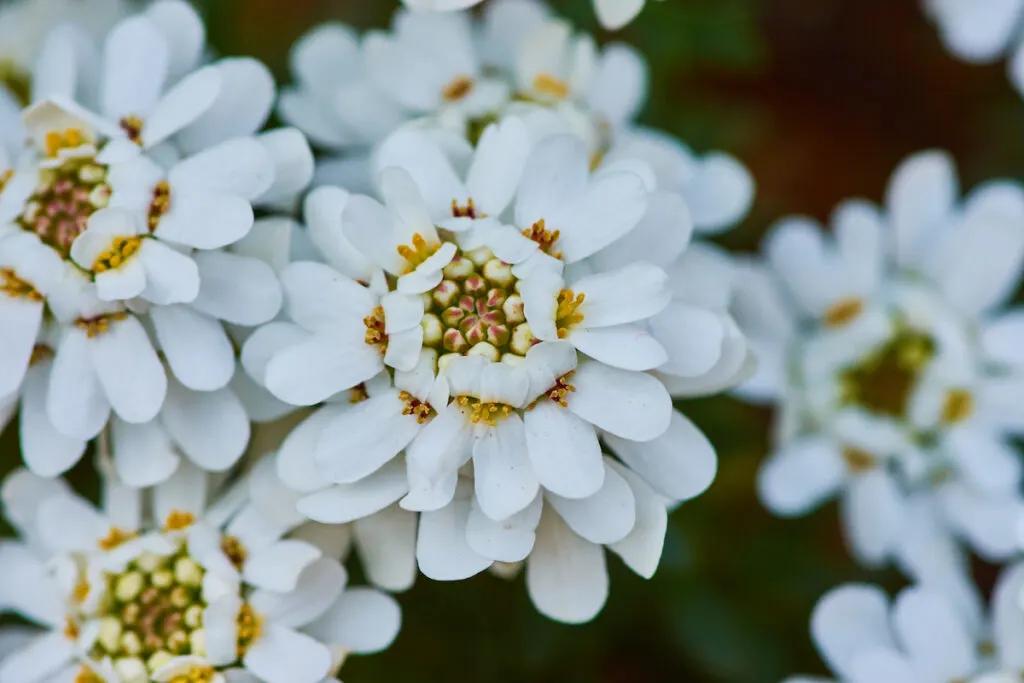
Although commonly considered a perennial, candytuft is actually a woody subshrub.
In warmer regions, it remains green year-round, but elsewhere, it works as a crowding perennial that loses its leaves every winter.
Candytuft makes our gardens colorful for a few weeks in the springtime and the beginning of summer with numerous white or light pink blooms.
The vibrant color of the flowers provides a welcome contrast to the deep green of the surrounding vegetation and the background.
The only drawback to these tiny blooms is the unpleasant smell they exude, but thankfully it is not very intense.
9. Creeping Phlox
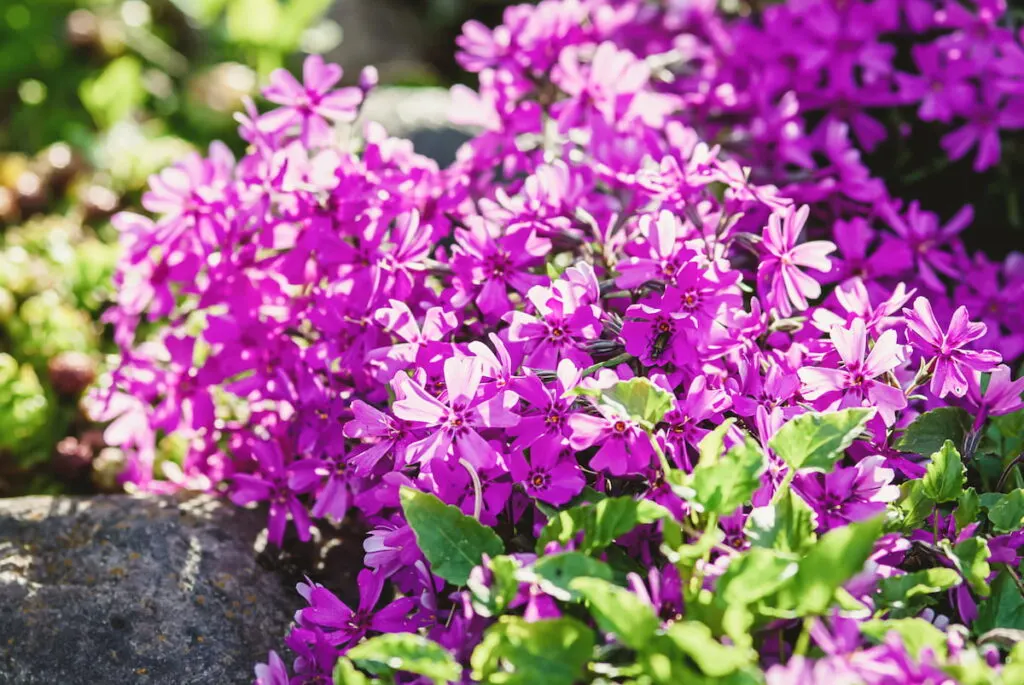
Creeping phlox is a popular choice among gardeners for use as a groundcover, along the edges of paths, and in rock gardens because of its ability to spread out and cover almost any surface quickly.
When creeping phlox is in full bloom in the spring, it creates a breathtaking carpet of colors, from white to dark purple, and all shades of pink and violet in between.
After the blooms have faded, the creeping phlox leaves remain to create a lovely green mat on the ground.
This perennial requires almost no upkeep, and once it’s established, it resists weeds beautifully.
10. Crown Imperial
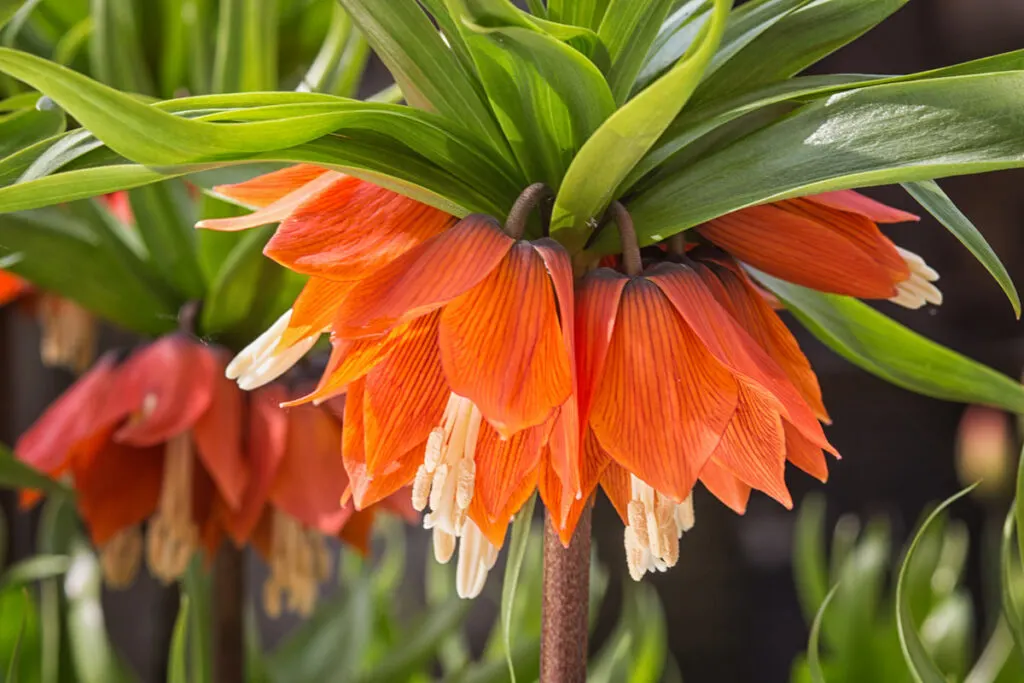
Originally from Asia and the Middle East, crown imperial flowers thrive in USDA hardiness zones 5 through 9 and are among the earliest springtime bloomers, setting the tone for the garden season.
From the size of the bulbs to the strength of the blossoms, everything about this plant is amazing.
The upright stalks of crown imperial flowers range in height from one to three feet, and they are capped with pointy leaves and a cluster of bell-shaped blooms.
Depending on the type, these blossoms can be seen in vibrant hues of red, orange, or yellow.
11. Columbine
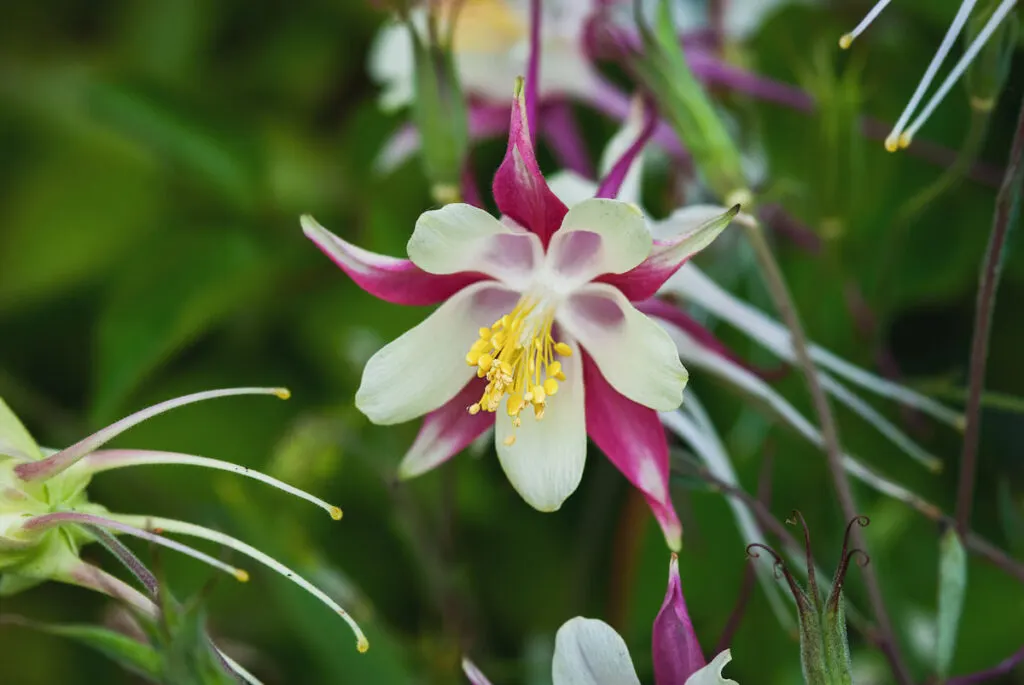
Columbine flowers are well-known for their extraordinary look. It’s also a low-maintenance plant that can last for years.
With two or more of a wide range of colors present in each bloom, including orange, pink, purple, white, and yellow, columbine flowers are a popular addition to many gardens.
Columbine flowers also attract beneficial insects and wildlife, such as birds and butterflies. This plant normally grows to a height of 1 to 2 feet and blooms from late spring to early summer.
12. Campanula latifolia
Campanula latifolia is a tall, leafy perennial that blooms with cylinder-shaped bells in shades of blue, lilac, or white all summer long.
The ornamental Campanula latifolia goes by a few different names: huge campanula, wide-leaved bellflower, and wide-leaved campanula.
It grows beautifully in moderate to deep shade and rapidly reproduces either via rhizomes or seeds. It is quite tolerant of dry conditions.
13. Crocus

Crocuses are perennial flowering plants that bloom in early spring and emerge from bulbs.
For many people, crocus flowers mark the arrival of spring. These small flowers are among the first to blossom, frequently poking their heads out through the snow.
Crocuses may thrive in various settings, from urban parks and forests to all types of home gardens.
The blossoms of the many crocus species range in color from mauve to lavender to yellow, and each has its own unique cuplike form.
14. Crocosmia
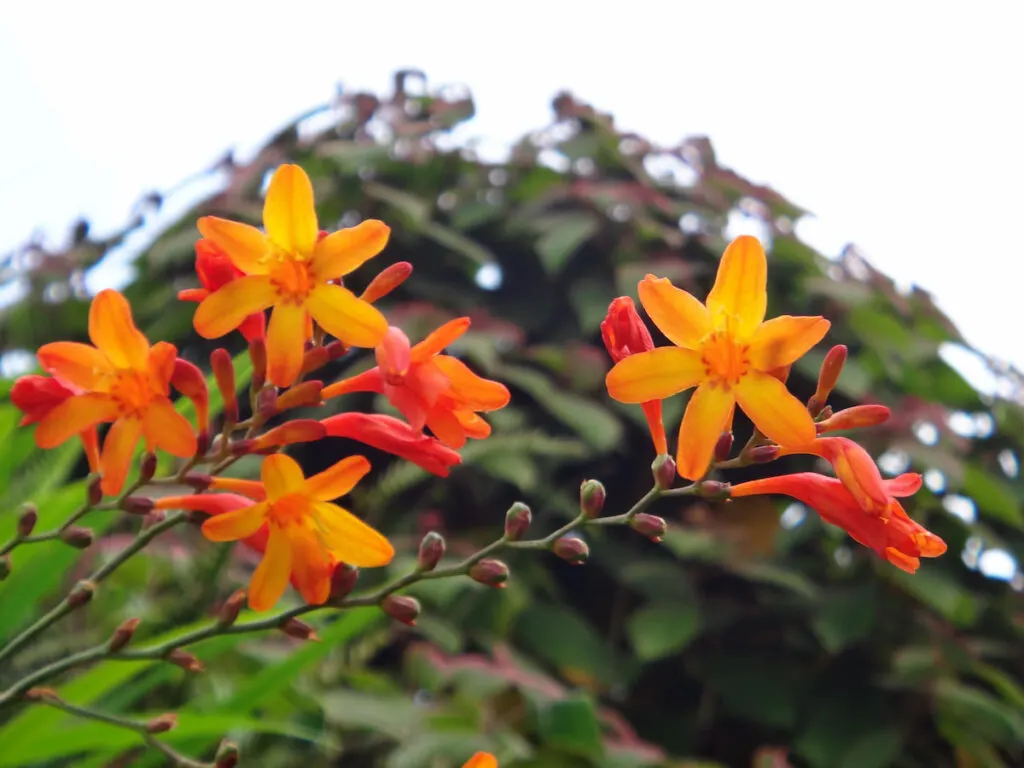
Crocosmia is a tall plant that blooms in the summer. Crocosmias are robust perennials that return each year from corms planted in the ground at the start of spring.
The lengthy arching stems of crocosmia plants are covered in colorful red, yellow, and orange blossoms.
The flowers open one by one, starting at the base of the stalk, and their grass-like leaves give the garden a sense of movement and beauty year-round.
The vibrant colors of the flowers on this plant make it a popular choice for cut flower bouquets and a magnet for pollinators like hummingbirds and butterflies.
15. Coneflower

Coneflowers, or pale purple coneflowers, are a perennial flower of the daisy family. The petals are typically quite thin and droopy, and they are pale purple or white.
The blossoms of coneflowers are notoriously long-lived, frequently lasting from springtime through the end of summer.
Regular deadheading is advised to promote continuous blooming.
Add them to your flower beds, borders, or wildflower gardens for a beautiful and natural touch. Their nectar is a magnet for pollinators like bees and hummingbirds.
16. Cyclamen

Cyclamen is a little flowering plant with small, fragrant flowers that grow on long stalks that rise above the leaves.
Cyclamen is a tuberous perennial, which means it dies back to its deep roots in the summertime and promptly re-grows in the fall.
Pink, purple, red, and white are just a few of the colors seen in cyclamen. The heart-shaped leaves are typically green and silver-marbled.
Cyclamen is a popular houseplant, so when winter comes around, you may find it in full bloom at garden shops and supermarkets.
17. Cymbidium
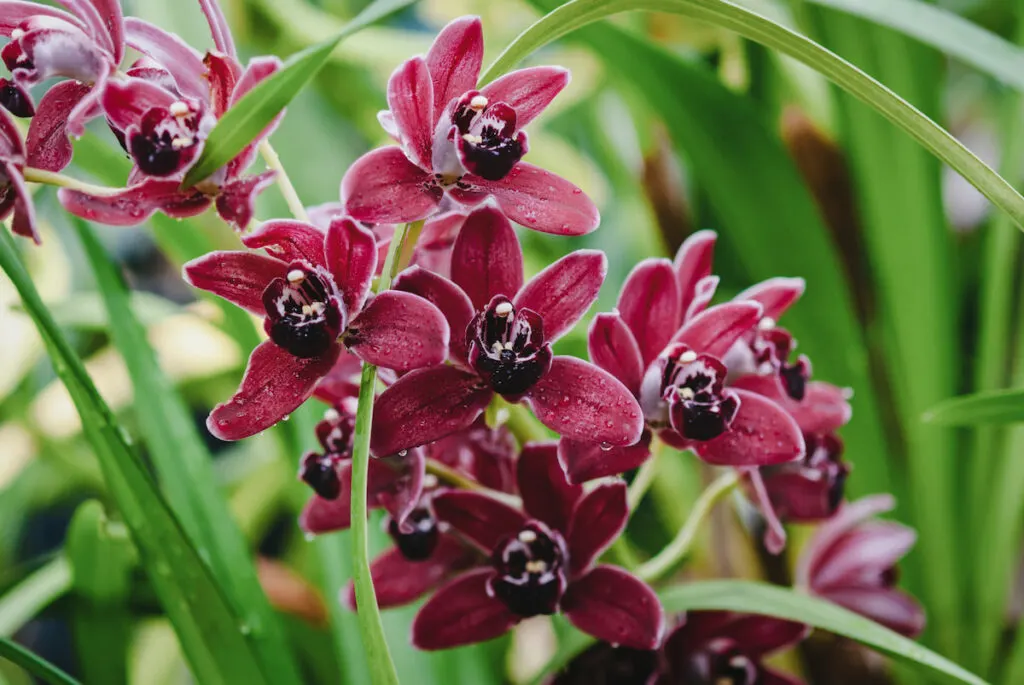
Cymbidium orchids, often known as boat orchids, are more resilient than most other types of orchids when it comes to cold weather.
Cymbidium orchids have long, narrow leaves and huge flowers that blossom in the winter months. The flowers have an exceptionally extended life, often exceeding three months.
Cymbidiums thrive in conditions similar to the native environments of tropical forests in Asia and Australia, where conditions are sunny but not too hot, the air is humid, and the soil is rich in organic matter.
Final Thoughts
While most gardeners organize their flower beds according to color or bloom time, there’s absolutely no reason you shouldn’t have a garden that follows the alphabet.
This article covers a wide range of plants, from annuals to perennials, from dwarfs to giants, and every color of the rainbow in between, all of which begin with the letter C.
Resources
- https://www.thespruce.com/home-improvement-4127862
- https://www.gardeningknowhow.com/ornamental/bulbs/calla-lily/growing-calla-lilies-and-care-of-calla-lilies.htm
- https://www.rhs.org.uk/plants/camellia/growing-guide
- https://www.lovethegarden.com/uk-en/article/chrysanthemums-chrysanthemum
- https://www.gardenersworld.com/how-to/grow-plants/how-to-grow-cosmos/
- https://www.allaboutgardening.com/celosia-annual-or-perennial/
- https://travaldo.blogspot.com/2020/05/celosia-plant-woolflowers-care-and-culture.html
- https://www.thespruce.com/candytuft-flowers-for-your-garden-2132549
- https://diygardening.co.uk/plants/spring-flowering/creeping-phlox/
- https://www.nature-and-garden.com/gardening/crown-imperial.html
- https://www.housedigest.com/795859/how-to-grow-and-take-care-of-columbine-flower/
- https://www.naturescape.co.uk/product/giant-bellflower/
- https://www.gardendesign.com/flowers/crocus.html
- https://www.gardendesign.com/bulbs/crocosmia.html
- https://www.gardeningknowhow.com/houseplants/cyclamen/cyclamen-care.htm
- https://www.orchidweb.com/cymbidium-orchid-care
